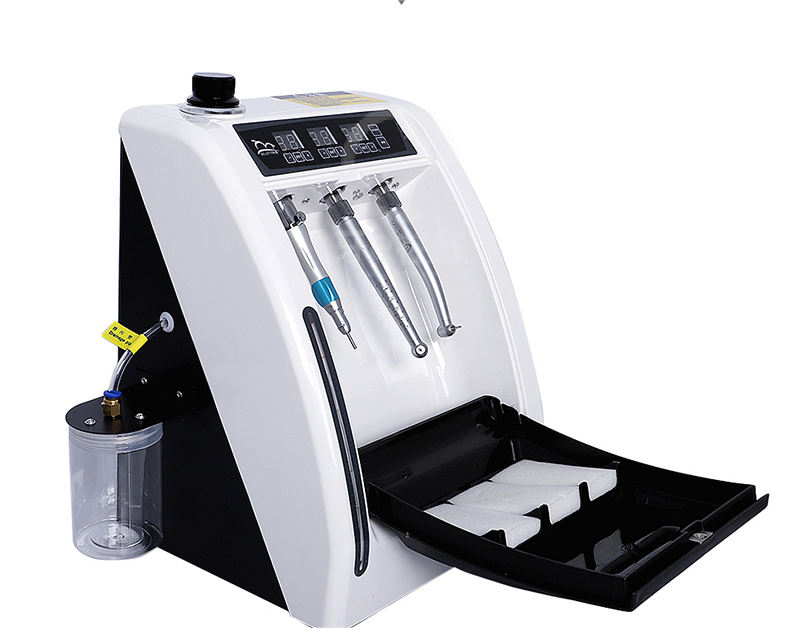Essential Practices for Dental Instrument Sterilization
The maintenance of sterile dental cleaning instruments stands as a cornerstone of safe and effective dental practice. These vital tools, from scalers to mirrors and probes, require meticulous care to ensure patient safety and optimal performance. Modern dental practices must adhere to stringent sterilization protocols that protect both patients and practitioners while extending the lifespan of valuable dental cleaning instruments.
Proper sterilization involves multiple stages, each crucial for maintaining the integrity and safety of dental cleaning instruments. From initial cleaning to final storage, every step plays a vital role in preventing cross-contamination and ensuring instruments remain in perfect working condition for each patient encounter.
Comprehensive Sterilization Protocol
Initial Cleaning and Decontamination
The journey of maintaining sterile dental cleaning instruments begins immediately after use. Staff must wear appropriate personal protective equipment while handling used instruments. The first step involves removing visible debris through manual cleaning or ultrasonic cleaning systems. Dental cleaning instruments should be submerged in an enzymatic solution that breaks down protein-based contaminants, making subsequent cleaning more effective.
Ultrasonic cleaners have revolutionized the initial cleaning process, using high-frequency sound waves to create microscopic bubbles that implode and remove debris from instrument surfaces. This technology ensures thorough cleaning of complex instrument designs, reaching areas that manual cleaning might miss.
Inspection and Packaging
Following thorough cleaning, each dental cleaning instrument must undergo careful inspection. This stage involves checking for residual debris, damage, or wear that might compromise functionality. Instruments showing signs of damage should be removed from circulation and replaced to maintain quality standards.
Proper packaging plays a crucial role in maintaining sterility. Instruments must be wrapped in FDA-approved sterilization pouches or cassettes that allow steam penetration while maintaining a sterile barrier. Each package should include chemical indicators that change color when exposed to proper sterilization conditions.
Advanced Sterilization Methods
Steam Autoclave Procedures
Steam autoclaving remains the gold standard for sterilizing dental cleaning instruments. This method uses pressurized steam at temperatures typically reaching 121-134°C (250-273°F). The combination of high temperature, pressure, and moisture effectively eliminates all forms of microorganisms, including spores.
Proper loading of the autoclave is essential for effective sterilization. Instruments must be arranged to allow steam circulation, avoiding overcrowding that could create cold spots where sterilization might be incomplete. Regular maintenance and monitoring of autoclave function ensure consistent results.
Alternative Sterilization Technologies
While steam autoclaving is most common, other methods may be appropriate for specific dental cleaning instruments. Dry heat sterilization operates at higher temperatures for longer periods and suits instruments that might be damaged by moisture. Chemical vapor sterilization provides another option, particularly useful for moisture-sensitive items.
Each method requires strict adherence to manufacturer specifications regarding temperature, time, and pressure parameters. Regular validation through biological indicators confirms the effectiveness of the sterilization process.
Storage and Handling Protocols
Proper Storage Conditions
Maintaining the sterility of dental cleaning instruments extends beyond the sterilization process. Proper storage conditions prevent contamination and ensure instruments remain ready for use. Storage areas must be clean, dry, and dust-free, with controlled temperature and humidity levels.
Sterilized instruments should be stored in enclosed cabinets or drawers, arranged to minimize handling and prevent damage to packaging. Regular monitoring of storage conditions and implementation of first-in-first-out inventory management helps maintain instrument integrity.
Handling and Transport
Careful handling of sterilized dental cleaning instruments prevents contamination before use. Staff should examine packaging integrity before opening and use aseptic technique when handling sterilized instruments. Any compromised packages must be reprocessed to maintain sterility standards.
Transport between storage and treatment areas requires careful attention to maintain sterile conditions. Using covered trays or cassettes protects instruments during movement and helps organize instruments for specific procedures.
Maintenance and Quality Assurance
Regular Monitoring Systems
Quality assurance for dental cleaning instruments involves multiple monitoring systems. Chemical indicators on packaging provide immediate feedback about sterilization exposure. Biological indicators, used regularly, confirm the effectiveness of sterilization processes through spore testing.
Documentation of sterilization cycles, maintenance procedures, and monitoring results creates an audit trail that demonstrates compliance with safety standards. Regular review of these records helps identify potential issues before they affect instrument sterility.
Staff Training and Compliance
Successful maintenance of sterile dental cleaning instruments depends heavily on well-trained staff following established protocols. Regular training sessions ensure all team members understand current sterilization requirements and proper handling procedures.
Creating clear standard operating procedures and conducting periodic audits helps maintain consistent compliance with sterilization protocols. Staff should feel empowered to report concerns and suggest improvements to the sterilization process.
Frequently Asked Questions
How often should dental cleaning instruments be sterilized?
Dental cleaning instruments must be sterilized between each patient use. This includes complete processing through cleaning, packaging, and sterilization, regardless of the apparent condition of the instruments after use.
What are the signs that dental instruments need replacement?
Look for signs of wear such as dulling, corrosion, rust spots, or damage to working ends. Instruments should also be replaced if they show difficulty maintaining proper sterilization or if packaging integrity becomes compromised repeatedly.
How long do properly sterilized dental instruments remain sterile?
When stored in proper conditions, sterilized dental cleaning instruments typically maintain sterility for up to six months if the packaging remains intact. However, many practices implement shorter storage periods as an additional safety measure.
What documentation should be maintained for instrument sterilization?
Maintain records of sterilization cycles, biological monitoring results, maintenance logs, and staff training. Documentation should include dates, lot numbers, and any deviation from standard protocols, along with corrective actions taken.

